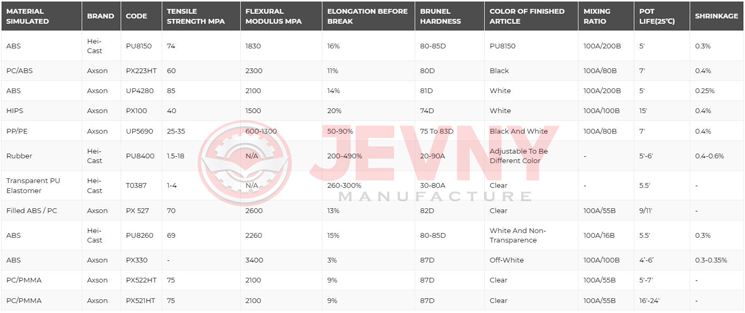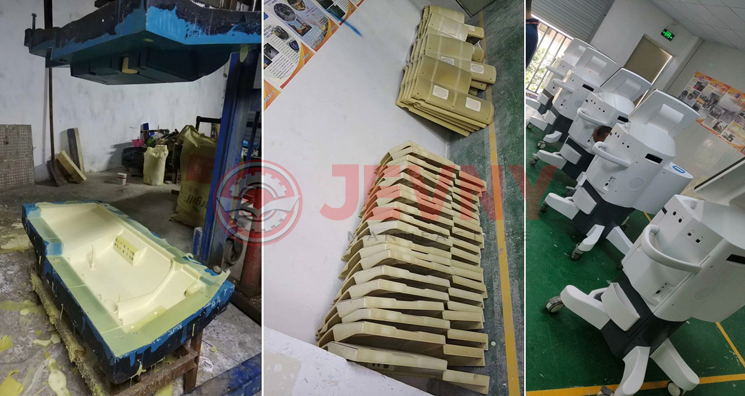Services
Vacuum Casting & RIM
Vacuum Casting is a specialized technique that uses polyurethane resins to create high-fidelity copies of master patterns, starting with a precise silicone mold made from a 3D-printed master.This method casts parts under vacuum conditions,ensuring bubble-free,detailed outputs that match the quality of injection-molded parts but are faster and more cost-effective.This makes it ideal for prototyping, small to medium production runs,and high-quality end-use parts.At JEVNY, we enhance polyurethane vacuum casting by ensuring up to 30-inch parts have minimal dimensional shrinkage of +0.15%, maintaining strict tolerances for complex designs.Our service is highly customizable,accommodating needs for clear,color-matched,or specially finished parts like those requiring EMI shielding.We also integrate various inserts during the casting process to boost functionality.

JEVNY's vacuum casting services offer a reliable alternative to injection molding,bridging the gap between prototype development and full-scale production without the high costs or long lead times. This provides a cost-effective, quality-assured solution tailored to specific client needs.Vacuum Casting Materials.Polyurethane is a widely used thermoset material grouping known for its strength,durability,abrasion resistance,and versatility.Different urethanes can mimic the properties of many common thermoplastics.The list below describes the categories of materials and technical examples when selecting polyurethanes.

Reaction Injection Molding (RIM),also known as low-pressure reaction injection molding,is a new manufacturing process applied to rapid molds.RIM mainly mixes two-component polyurethane materials and injects them into rapid molds at normal temperature and low pressure.Chemical and physical processes such as polymerization,cross-linking,and curing form products. It has the advantages of high efficiency, short production cycle and low cost. It is suitable for small batch trial production in the product development process, as well as the production of small batch production of covering parts with relatively simple structures and large thick-walled and uneven-walled products.






